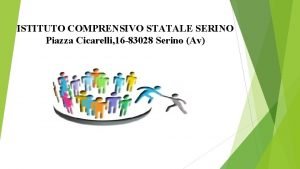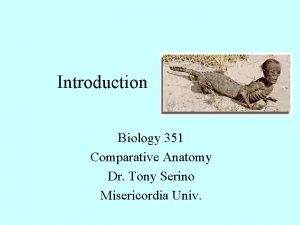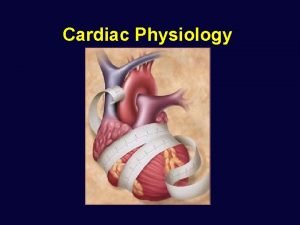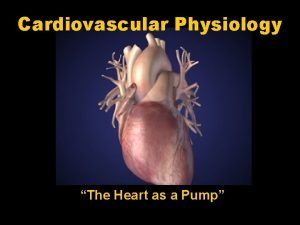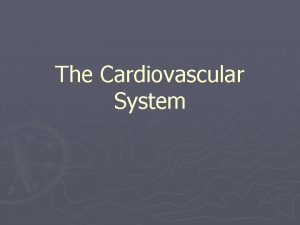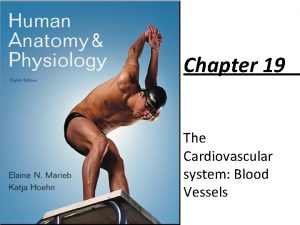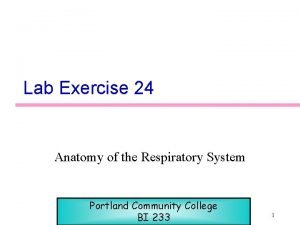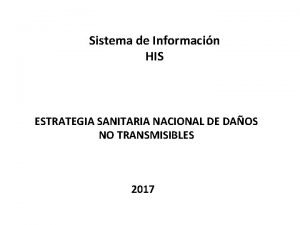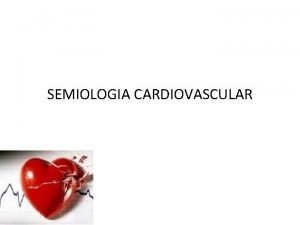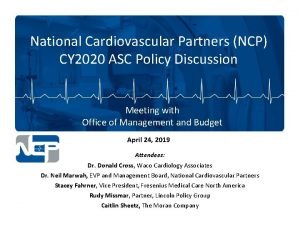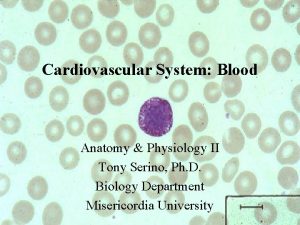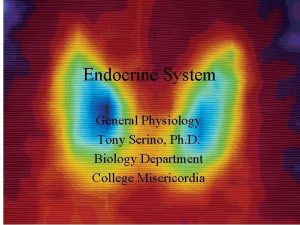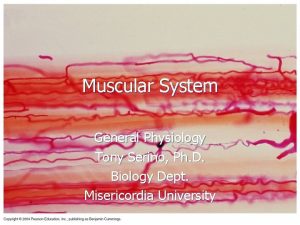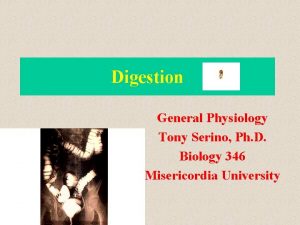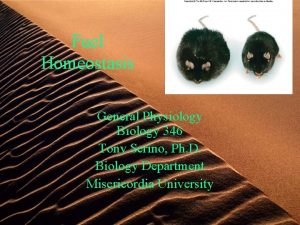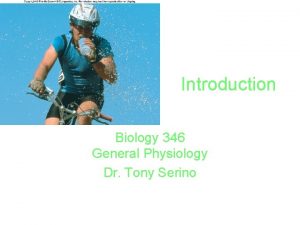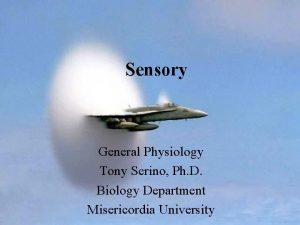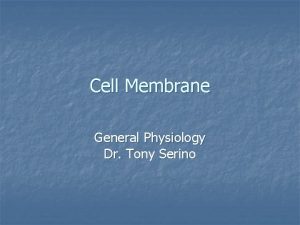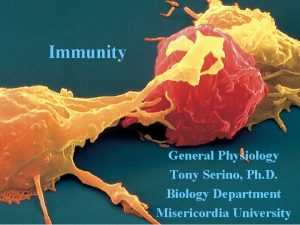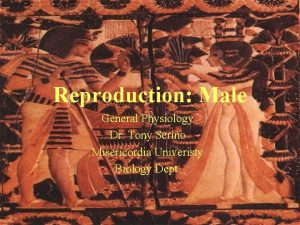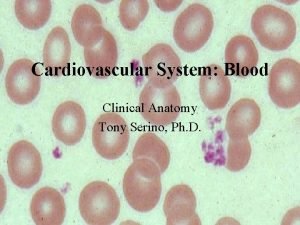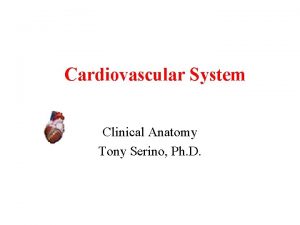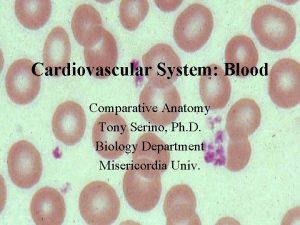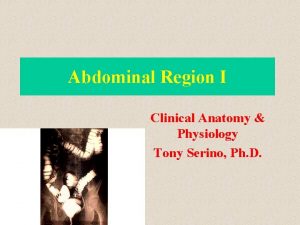Cardiovascular System Heart General Physiology Tony Serino Ph




































- Slides: 36

Cardiovascular System: Heart General Physiology Tony Serino, Ph. D. Biology Department Misericordia University

Heart as a Dual Pump • Cardiac muscle arranged as whorls that squeeze the blood • Twin pumps: systemic and pulmonary • Four chambers: 2 atria and 2 ventricles

Cardiac Muscle Cells

Cardiac Muscle Depolarization

Depolarization and Tension

Fig. 12. 17 Allows for Ca++ plateau

Heart: Internal Anatomy

Cardiac Cycle (mechanical action) Semilunar valves closed Semilunar valves opened AV valves closed Systole: Period of isovolumic contraction. Systole: Period of ejection. Systole: Period of isovolumic contraction. Ventricular contraction causes the AV valves to close, which is the beginning of ventricular systole. The semilunar valves were closed in the previous diastole and remain closed during this period.

Semilunar valves opened AV valves closed Systole: Period of ejection. Continued ventricular contraction pushes blood out of the ventricles, causing the semilunar valves to open. Semilunar valves closed AV valves closed Diastole: Period of isovolumic relaxation.

Semilunar valves closed AV valves closed Semilunar valves closed AV valves opened Diastole: Passive ventricular filling. Diastole: Period of isovolumic relaxation. Blood flowing back toward the relaxed ventricles causes the semilunar valves to close, which is the beginning of ventricular diastole. Note that the AV valves closed, also.

Diastole: Passive ventricular filling. The AV Semilunar valves closed valves open and blood flows into the relaxed ventricles, accounting for most of the ventricular filling. AV valves opened Diastole: Active ventricular filling. Semilunar valves closed AV valves opened Diastole: Passive ventricular filling.

Semilunar valves closed AV valves closed Semilunar valves closed AV valves opened Diastole: Active ventricular filling. Systole: Period of isovolumic contraction. Diastole: Active ventricular filling. The atria contract and complete ventricular filling.

Conduction System of Heart 1. Action potentials originate in the sinoatrial (SA) node and Sinoatrial travel across the wall of the (SA) node atrium (arrows) from the SA node to the atrioventricular Atrioventricular (AV) node 2. Action potentials pass through the AV node and along the atrioventricular (AV) bundle, which extends from the AV node, through the fibrous skeleton, into the interventricular septum. Atrioventricular (AV) bundle 3. The AV bundle divides into right and left bundle branches, and action potentials descend to the apex of each ventricle along the bundle branches. Left and Right bundle 4. Action potentials are carried branches by the Purkinje fibers from Purkinje the bundle branches to the fibers ventricular walls. Left atrium 1 2 3 Left ventricle 4 Apex

Pacemaker Potential

Control of Pacemaker

ECG Correlates Electrical Events

Normal ECG

ECG Leads Einthoven’s Triangle

ECG Normal Sinus Rhythm Junctional Rhythm (AV node rhythm)

Second Degree Heart Block Ventricular Fibrillation (V-fib)

Fig. 12. 16

Heart Sounds • “Lub-dub” • Sound associated with valve closing producing turbulent blood flow


Cardiac Cycle

(ml/min)

Factors Affecting SV • Stroke Volume (SV) = End Diastolic Volume – End Systolic Volume • SV = EDV – ESV (ml/beat) • EDV affected by: – Venous return which is dependent on venous tone, skeletal muscle pumps, etc. • ESV – As the heart fills it is stretched which allows for better overlap of the contractile proteins which will affect the force of contraction and the ESV (Starling’s Law of the Heart) – Increasing the force of contraction at any EDV will decrease the ESV and increase the SV (sympathetic stimulation and epinephrine)

EDV is affected by Venous Return

At any EDV, increased force of contraction will increase SV (↓ESV)

As the heart fills, the muscle is stretched allowing for better overlap of contractile proteins which increases force of contraction (↓ESV)

Sympathetic Stimulation • Leads to increase HR • Increases in Ca++ release from SR, increase Ca++ through membrane and increase myosin crossbridge cycling • Increases force of contraction

Heart Rate Control • Sinus Rhythm = normal SA node control • Autonomic Activity – Sympathetic = accelerator (tachycardia) – Parasympathetic = brake (bradycardia) • Hormones – epinephrine • Drugs -caffeine, nicotine, atropine, etc.

Summary ↑ stretch ↑ Contraction Strength

CV Effects during Exercise

Exercise Benefits • Heart’s maximums are increased • Effort is decreased

Fig. 12. 07

 Anatomy and physiology unit 7 cardiovascular system
Anatomy and physiology unit 7 cardiovascular system Istituto comprensivo serino
Istituto comprensivo serino Dalvin serino
Dalvin serino Refractory period heart
Refractory period heart Heart as a pump physiology
Heart as a pump physiology Capillary bed labeled
Capillary bed labeled What makes up the cardiovascular system
What makes up the cardiovascular system Pithed rat model
Pithed rat model Its tubular dude
Its tubular dude Com
Com Chapter 5 the cardiovascular system
Chapter 5 the cardiovascular system Figure 11-9 is a diagram of the hepatic portal circulation
Figure 11-9 is a diagram of the hepatic portal circulation Figure 11-2 is an anterior view of the heart
Figure 11-2 is an anterior view of the heart Chapter 11 the cardiovascular system
Chapter 11 the cardiovascular system Lesson 11 cardiovascular system
Lesson 11 cardiovascular system Tissues in circulatory system
Tissues in circulatory system The cardiovascular system chapter 11
The cardiovascular system chapter 11 Introduction of heart
Introduction of heart Ptca
Ptca Chapter 8 cardiovascular system
Chapter 8 cardiovascular system Chapter 13 cardiovascular system
Chapter 13 cardiovascular system Chapter 11 the cardiovascular system figure 11-2
Chapter 11 the cardiovascular system figure 11-2 The cardiovascular system includes the
The cardiovascular system includes the Major arteries
Major arteries True capillaries definition
True capillaries definition Chapter 6 general anatomy and physiology
Chapter 6 general anatomy and physiology Third heart sound
Third heart sound Goat heart dissection
Goat heart dissection Hrt to hrt merrylands
Hrt to hrt merrylands Exercise 24 review sheet respiratory system physiology
Exercise 24 review sheet respiratory system physiology Nostrils
Nostrils Pectoral girdle acetabulum
Pectoral girdle acetabulum Riesgo cardiovascular por perimetro abdominal
Riesgo cardiovascular por perimetro abdominal Maniobra de azulay
Maniobra de azulay Rias hipertension arterial
Rias hipertension arterial Fresenius national cardiovascular partners
Fresenius national cardiovascular partners Heart rate during exercise
Heart rate during exercise

